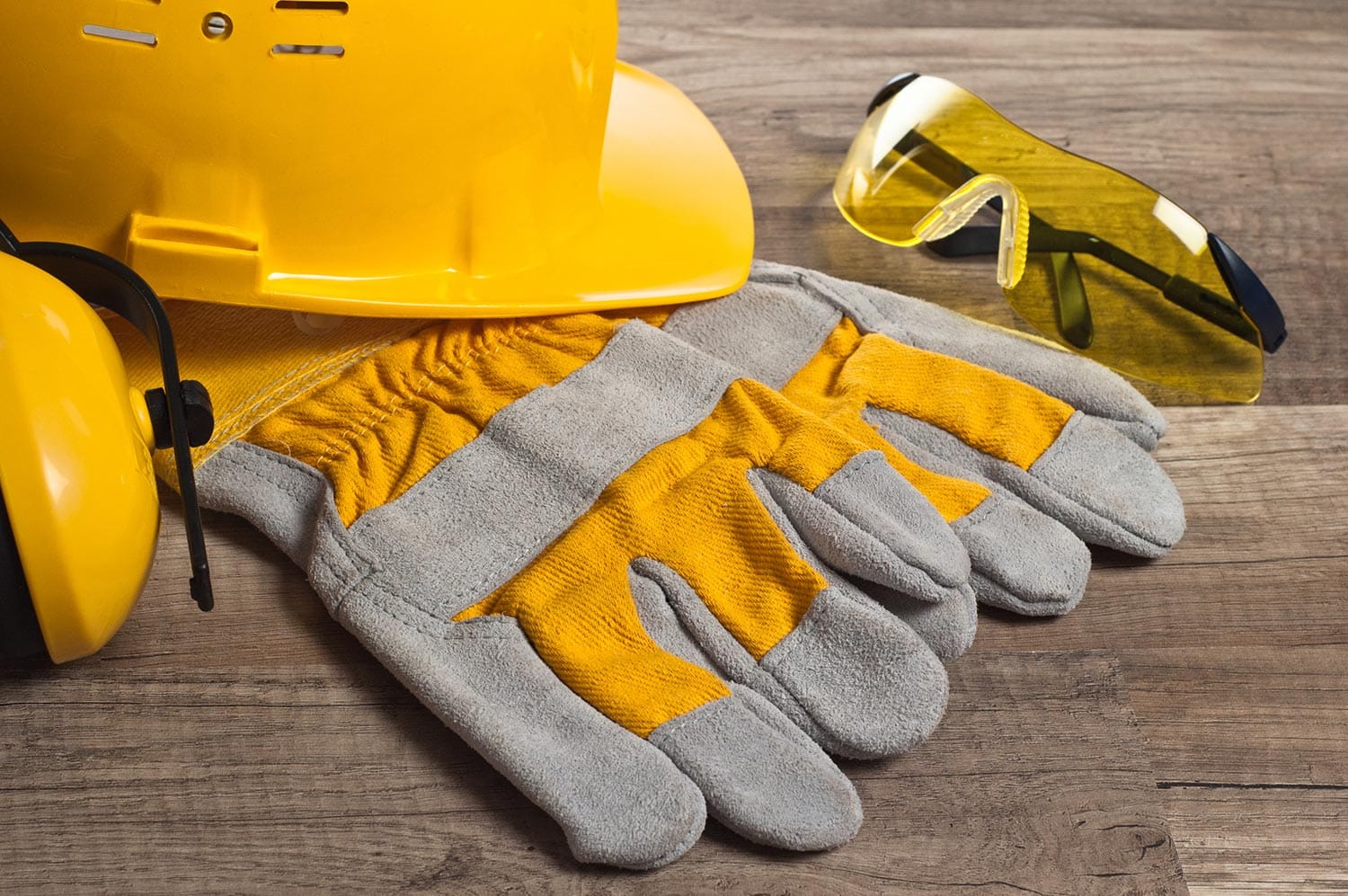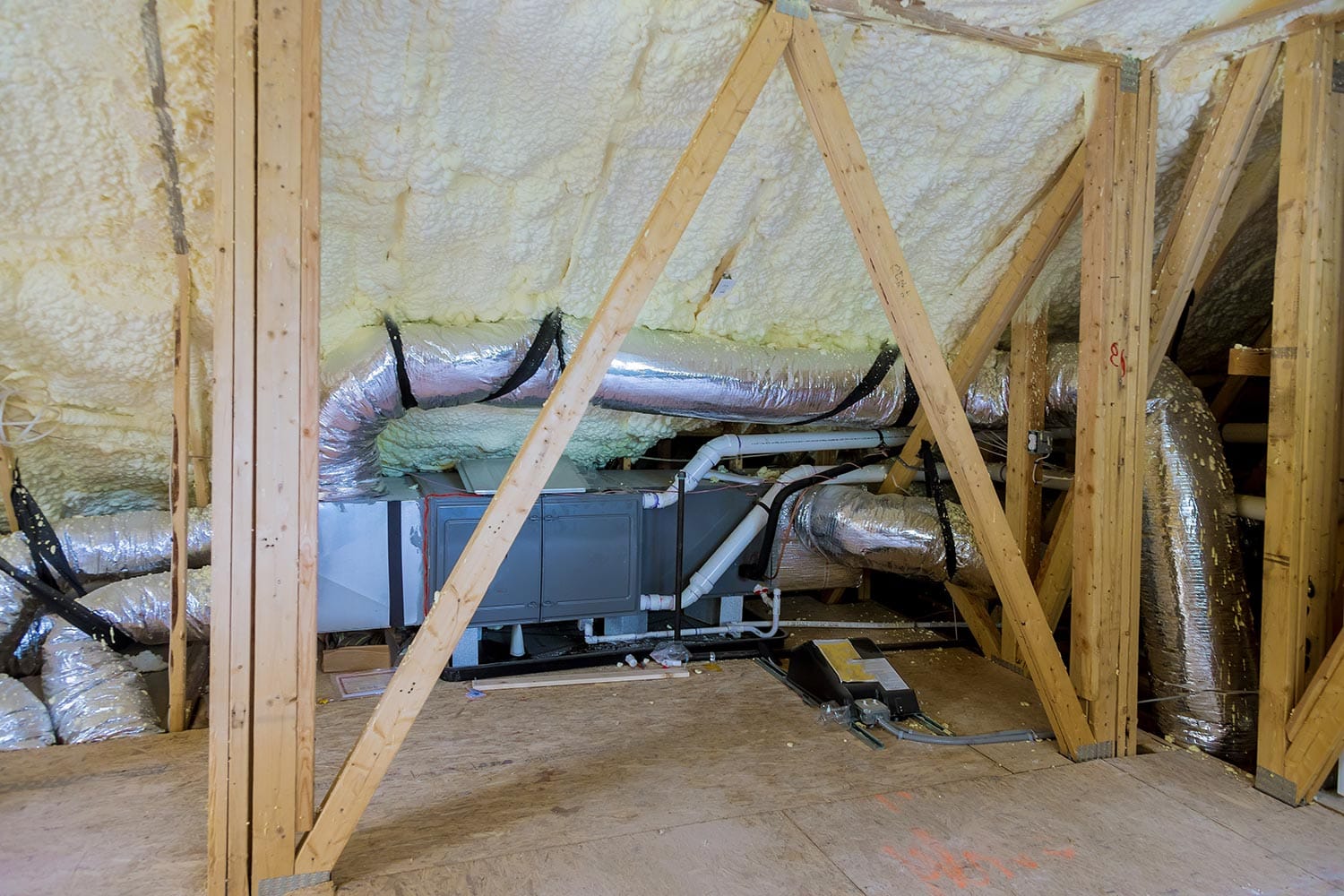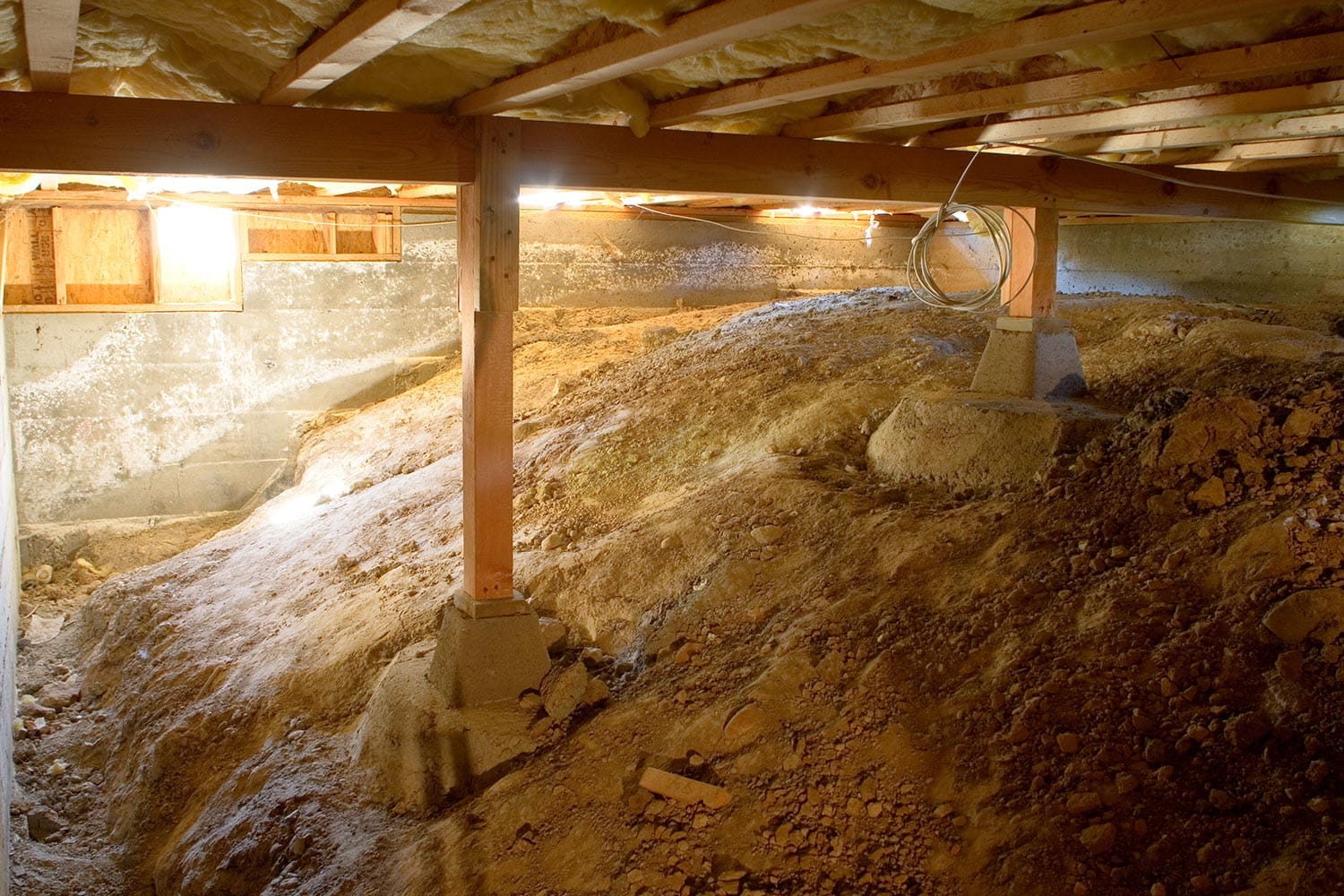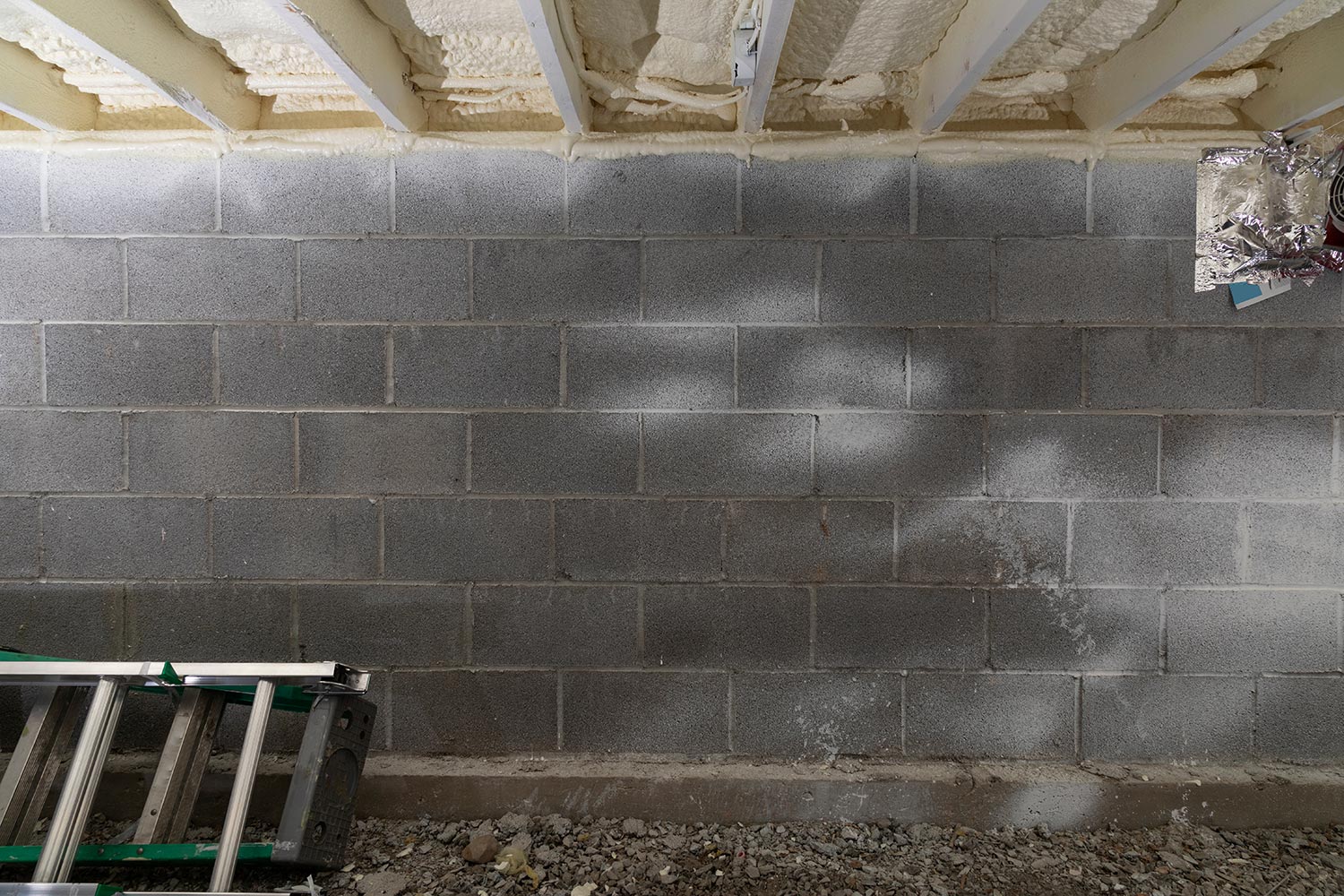Insulating a crawl space ceiling is usually a job for the pros, but that does not mean a DIYer cannot get the job done right. If you're ready to get both hands dirty, then we will help you get through the process easily. We know the tools you need and the step-by-step procedure to successfully install crawl space ceiling insulation.
You can use any insulation material for the crawl space ceiling, but fiberglass insulation is the cheapest choice. When installed correctly, it can last for many years. Here's how you insulate the crawlspace ceiling using fiberglass:
- Seal the gaps and spaces around the pipes, joists, and the ceiling.
- Unpack the fiberglass insulation to allow it to expand.
- Measure the sizes of the areas where you will install the insulation material.
- Cut the fiberglass insulation based on the measurements using a utility knife.
- Fill the gaps between joists with fiberglass insulation.
- Seal any remaining gaps using foam spray, caulk, or insulation tape.
- Trim or scrape off excess sealant.
We made it sound simple, but there's more to learn about installing fiberglass insulation. You need to know the tools, the proper way of sealing gaps, and everything in between to make this DIY renovation work. And we are glad to help you with those.

How to Insulate Crawl Space Ceiling
Back in the early years, people do not insulate the crawl space. That is why it is typical to see older homes without insulation under the floors of their home.
As days passed, the significance of insulating the crawl space and basement came into the limelight. Building contractors and even the US Department of Energy now recommend these spaces be installed with insulation.

Now, let's move on to what you came here for - how to insulate a crawl space ceiling. Without further ado, here are the tools and materials you will need for crawl space ceiling insulation.
Tools and Materials for Crawl Space Ceiling Insulation
- fiberglass insulation batt or roll
- insulation tape
- caulk or foam sealant
- insulation tape
- utility knife
- insulation tape
- insulation support
Fiberglass insulation come in two types: batt and roll. There is hardly any difference between the efficiency of the two, but the manner they are installed. The rolls are installed by rolling them out in between the joists, while the batts are installed piece by piece.
Safety Equipment

Working in the crawl space will expose you to a lot of dust and contaminants. Any space under renovation is also an area prone to injuries and accidents. You should prepare the following safety equipment before working on insulation under the house:
- N95 mask
- goggles
- coverall
- gloves
- comfortable shoes
- hardhat
Now that you have your tools and safety equipment on hand, you should be ready to insulate the crawl space ceiling.
Steps to Insulate Crawl Space Ceiling
Safety is the main concern so make sure to remove every clutter that might be a reason for accidents and injuries.
With that in mind, it is only wise to take the additional steps and fix any issues that can speed up the useful years of your fiberglass insulation first. Before insulating the ceiling, check for leaking pipes, mold infestation, and moisture problems and repair them.
Then proceed to installation using the following steps:
1. Seal the gaps and spaces around the pipes, joists, and the ceiling.
The main goal of insulation is to improve heat resistance which in turn reduces your cooling and heating expenses. Thus, a properly sealed crawl space will help achieve that. Therefore, it makes sense to seal all the gaps and spaces on the ceiling.
You may use foam spray to seal these spaces. It does the job faster which makes a foam spray gun a good investment if you are insulating a wide ceiling.
View this foam dispensing gun on Amazon.
Alternatively, you can use caulk and insulation tapes to seal gaps and spaces.
2. Unpack the fiberglass insulation to allow it to expand.
Unpack the insulation minutes before installation. It expands to its full size and form once you take it out of the packaging.
3. Measure the sizes of the areas where you will apply insulation.
You want to leave no gaps when you fill the spaces between the joists with insulation. While you can add insulation in specific sizes to cover up leftover gaps, plastering an entire gap using a full sheet makes neat insulation. To do this, you should get the length and width of every area and record them on a piece of paper.
4. Cut the fiberglass insulation based on the measurements using a utility knife.
Use your utility knife to cut the fiberglass into the required sizes. You may go over your measurements by a bit but never any less. This will cause the insulation to fall away from the ceiling easily. When that happens, you will need insulation support and additional sealing.
5. Fill the gaps between joists with fiberglass insulation.
Now fill the gaps between the joists one at a time. Make sure the insulation covers the entire gap from all ends. When it is measured and trimmed correctly, it should not require any support. Otherwise, use insulation support to keep the fiberglass in place.
Check out this steel and wire insulation support on Amazon.
Fiberglass insulation has foil lining on one side, which should be facing towards the ceiling when installed. This foil lining serves as a moisture barrier between the crawl space ceiling and the insulation material.
6. Seal any remaining gaps using foam spray, caulk, or insulation tape.
Now that you have covered the entire ceiling with insulation, it is time to seal all the remaining gaps no matter how small they are. A foam spray will seal small spaces very well, but you can also use caulk and insulation tape for other gaps.
7. Trim or scrape off excess sealant.
Scrape off excess sealant when possible for a neat-looking insulated crawl space ceiling.
How to Insulate Pipes in the Crawl Space

Some pipes are installed in between the joists. Other pipes are laid outside the joists. Wherever they may be installed in the crawl space, insulating them is a must to keep them from freezing in the winter.
Pipes laid in a properly insulated crawlspace that receives conditioned air from the living space may not need extra insulation. On the other hand, you should insulate the pipes when they are exposed to unconditioned air.
To insulate pipes installed between two joists, you may use foam insulation or even fiberglass insulation. Use the insulation material to cover the pipe.
Pipes laid outside the joists may be insulated using foam tubing and then covered with pipe wrap insulation.
Here's a video demonstrating pipe insulation in the crawl space.
Crawl Space Ceiling Insulation Vs. Crawl Space Wall Insulation
You are probably wondering why some crawl spaces insulate the walls instead of just the ceiling. There is a specific answer to that. Which type suits your crawl space best depends on whether you have a vented or unvented crawl space.
Crawl Space Ceiling Insulation

Before, it was believed that crawl spaces should have vents to keep them dry. After all, they were usually unconditioned parts of the home. If this is your home's case until now, then ceiling insulation works best for your crawl space.
Insulating the ceiling will trap the conditioned air within the living area above the crawl space. This is why it is important to seal all leaks and gaps when installing insulation.
Crawl Space Wall Insulation
Today, building contractors support the idea of building closed crawl spaces to improve energy efficiency and prevent moisture-related problems. Needless to say, there would be no way for warm air to enter the crawl space and cold air to escape when there are no vents.
To maximize the idea, the US Department of Energy now recommends insulating unventilated crawl spaces through the walls and making them part of the conditioned living space.
Is Insulating Crawl Space Ceiling Worth It?

Insulating the crawl space ceiling is worth it when you have an unventilated crawl space. This keeps the conditioned air in the living space from escaping through the small spaces on the floor. At the same time, insulation prevents warm air from leaking to the inside of the house.
Crawl space ceiling insulation increases energy efficiency, reduces moisture-related problems, and improves the lifespan of your HVAC system.
Final Thoughts
Insulating the crawl space ceiling is a tedious process but there's no reason for you to not be able to do it. It's as easy as creating an airtight space using our step-by-step procedure.
Now you know more about the tools, materials, and safety equipment you'll need to insulate a crawl space in your home. We've also seen how to insulate the crawl space yourself, including the ceiling, walls, and pipes.
If you found this article helpful, be sure to check out these great posts:
How Long Does Fiberglass Insulation Last?
Does Insulation Help With Cooling?


